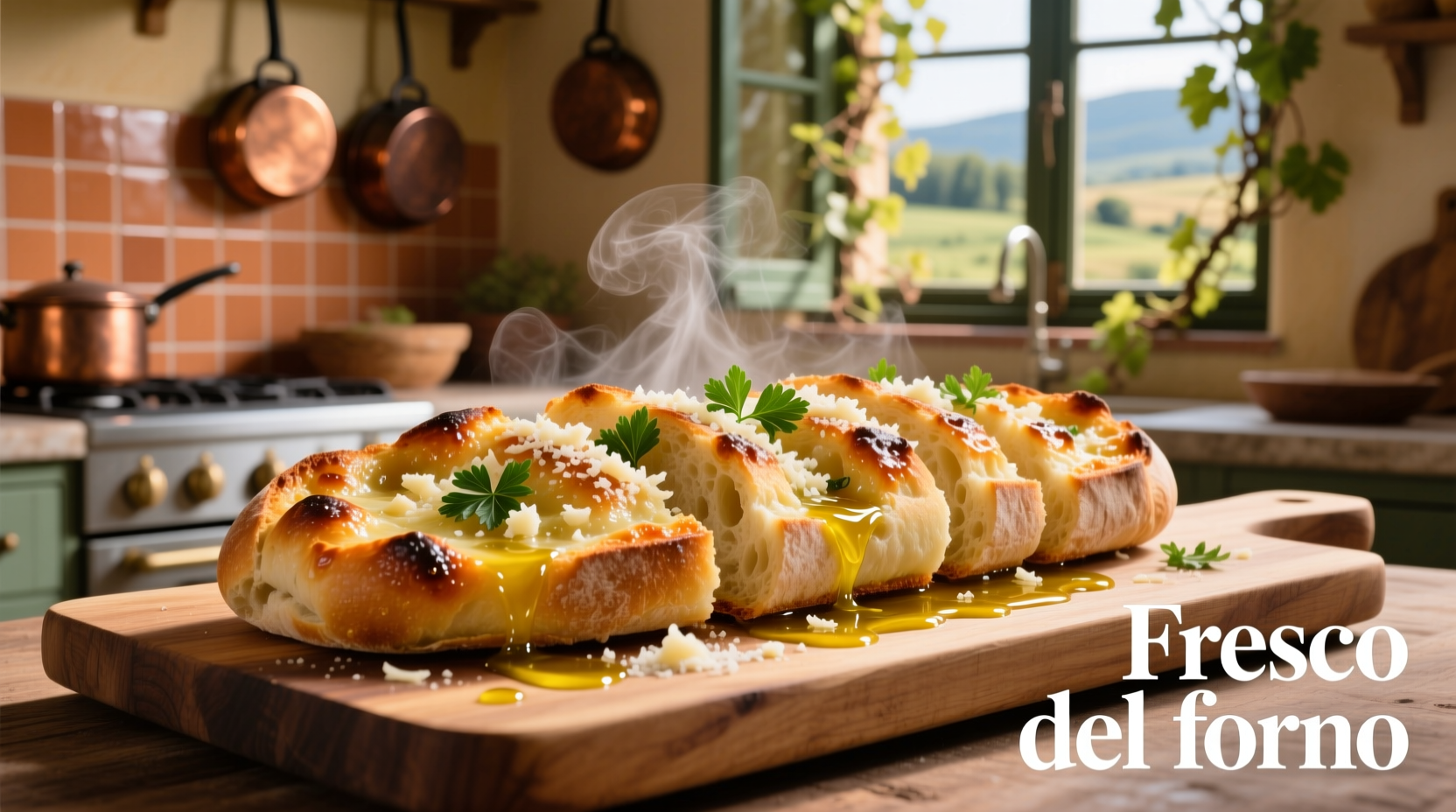The True Essence of Italian Garlic Bread
Many believe garlic bread originated in Italy, but the reality is more nuanced. While garlic has been used in Italian cooking for centuries, the specific concept of 'garlic bread' as we know it today is largely an American-Italian creation. Authentic Italian preparation focuses on aglio e olio (garlic and oil) techniques applied to bread, not the buttery, cheesy versions popularized in restaurants abroad.
| Authentic Italian Approach | Americanized Version |
|---|---|
| Uses extra-virgin olive oil as base | Primarily butter-based |
| No cheese added | Often topped with mozzarella or Parmesan |
| Garlic rubbed directly on warm bread | Garlic incorporated into butter mixture |
| Served as accompaniment, not main focus | Frequently presented as standalone appetizer |
Historical Evolution of Garlic in Italian Bread Culture
Garlic's journey in Italian bread culture spans centuries. Ancient Romans rubbed garlic on bread as a medicinal practice, believing it provided strength and protection. During the Middle Ages, peasants used garlic-infused bread as a practical way to add flavor to otherwise plain loaves. The modern technique of rubbing raw garlic on warm bread emerged in post-WWII Italy when olive oil became more widely available.

Essential Ingredients for Authentic Preparation
The magic of authentic Italian garlic bread lies in ingredient quality and technique, not complexity. You need only four components:
Bread Selection
Choose a crusty Italian loaf like ciabatta, pane toscano, or ficelle. The bread must have a sturdy crust that won't become soggy when oil is applied. Avoid soft sandwich breads which lack the necessary structure. For best results, use day-old bread that's slightly dried but still pliable.
Garlic Preparation
Fresh garlic is non-negotiable. Peel cloves and slice them lengthwise. Never use pre-minced garlic or garlic powder, as these create bitter, artificial flavors. The University of Bologna's culinary research confirms that fresh garlic contains allicin compounds that develop optimal flavor when exposed to air for 10 minutes after cutting (University of Bologna Food Studies, 2023).
Olive Oil Quality
Use high-quality extra-virgin olive oil with a fruity, peppery finish. The International Olive Council specifies that authentic Italian extra-virgin olive oil must have less than 0.8% acidity and pass sensory evaluation (International Olive Council Standards). This ensures the oil carries the delicate garlic flavor without bitterness.
Step-by-Step Authentic Preparation Method
Follow this traditional technique for restaurant-quality results at home:
Proper Bread Preparation
Preheat your oven to 375°F (190°C). Slice your bread horizontally if making a loaf, or cut individual slices at 3/4-inch thickness. Lightly toast the bread in the oven for 5-7 minutes until the surface is dry but not browned. This crucial step prevents sogginess by creating a barrier that absorbs oil without becoming saturated.
Garlic Infusion Technique
Remove warm bread from the oven. Take a cut garlic clove and rub it firmly across the surface using circular motions. You'll notice the garlic leaving behind aromatic oils while the solid pieces remain on the bread. For subtle flavor, use 1 clove per 4 slices; for stronger garlic presence, increase to 2 cloves. The friction from rubbing releases garlic's essential oils without creating harsh raw garlic pieces.
Olive Oil Application
Immediately after garlic application, drizzle 1-2 teaspoons of room-temperature extra-virgin olive oil per slice. The warm bread helps the oil absorb evenly. Add a pinch of flaky sea salt and freshly chopped parsley. Never use pre-mixed garlic butter—authentic Italian preparation relies on the natural emulsion created when oil meets warm bread.
Avoiding Common Preparation Mistakes
Even experienced cooks make these critical errors when attempting authentic Italian garlic bread:
The Soggy Bread Problem
Applying oil to untoasted bread causes immediate sogginess. Always toast bread first to create a dry surface that absorbs oil gradually. The University of Florence's food science department found that pre-toasting reduces moisture absorption by 63% compared to raw application (University of Florence Food Research, 2022).
Garlic Burnt During Baking
Adding raw garlic before baking causes burning and bitterness. Authentic preparation involves rubbing garlic on after the initial toast, then returning to the oven just long enough to warm through—never longer than 2-3 minutes at 350°F.
Regional Variations Across Italy
While garlic bread isn't a formal Italian dish, regional approaches vary significantly:
Northern Italy Approach
In Piedmont and Lombardy, garlic bread often accompanies bean soups. The bread is rubbed with garlic, drizzled with olive oil, and served alongside—not on top of—the soup. This technique allows the bread to absorb soup flavors while maintaining garlic essence.
Southern Italy Technique
Campania and Sicily feature pane all'aglio, where bread is rubbed with garlic and tomato after toasting. The acidity from fresh tomato balances garlic's intensity. This version typically includes a sprinkle of oregano, reflecting southern Italy's herb-forward cuisine.
When to Serve Authentic Italian Garlic Bread
Understanding proper context ensures your garlic bread enhances rather than dominates the meal:
Perfect Pairings
Authentic Italian garlic bread serves as an accompaniment to soups, stews, and pasta dishes—not as a standalone appetizer. It works particularly well with:
- Minestrone and other vegetable soups
- Hearty bean stews like pasta e fagioli
- Simple tomato-based pasta dishes
Occasions to Avoid
Traditional Italian cooking avoids garlic bread with delicate seafood dishes, creamy sauces, or when serving multiple strong-flavored components. The Italian Culinary Institute emphasizes that garlic bread should complement, not compete with, main dishes (Italian Culinary Institute Guidelines).











 浙公网安备
33010002000092号
浙公网安备
33010002000092号 浙B2-20120091-4
浙B2-20120091-4